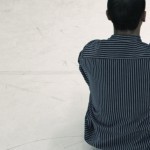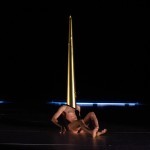Special Event: KUNST-STOFF Dance Company & Guest, Ivo Serra
October 19 2013 @ 8:30pm
@ KUNST-STOFF arts
Presented by KUNST-STOFF
A special event to kick off our Retrospective 15th anniversary Season.
Join Yannis Adoniou, Tomi Paasonen, and this season’s contributing artists for a special event featuring a preview of new works and a special performance of guest artist Ivo Serra, performing his solo, META HORSE.
META HORSE
Concept | Performance | Performer Ivo Serra
Set Design Ivo Serra
Mentor and Collaborator Tomi Paasonen
Research Coaching Alain Franco
Music Richard Wagner “Siegfried Horn long call”
Did I just feel the space condition my body or is it my body that is conditioning the existing space around me?
I started to make my research on the subject of the horse, by buying a manual: First Steps On Riding A Horse. The deeper I got into my research, the more surprised I became of the fact how MAN could confine such animal into such defined and harsh spaces, especially as its original place is in Nature where no (human) borders (should) exist… Further in the book, I came across specific language that could be regarded as educational politics regarding the ANIMAL in question… Further on, gender was appropriated to certain types of races, and parameters determined on how to distinguish a champion from a regular horse by its anatomy, followed by chapters on stable management, variations on equitation techniques, tips from how to walk a horse in different steps to how to control its speeds. Finally it was concluded with guidance on clothing, shoe care, the procedures to keep a healthy, clean and idealistic appearance and matching the ideal horse with a good rider.
After 219 pages of many micro representations of power and control, I realized that I was not dealing with the nature of the horse in question at all, but merely with a set of codes or rules exposing (in) visible ideologies, of human society imposing its own limiting archetypical representations on this ANIMAL, far removed from its natural existence. Yet suddenly, as I made the “riding manual” into my dance practice, the Horse I no longer could see became very visible in the questions I started to embody. While negotiating the limitations of form and space, and who is forming whom within these (in) visible borders of meaning as their potential archetypes crashes into each other in my body, the question remains, which “Horse” is it a representation of?

 META HORSE
META HORSE 

